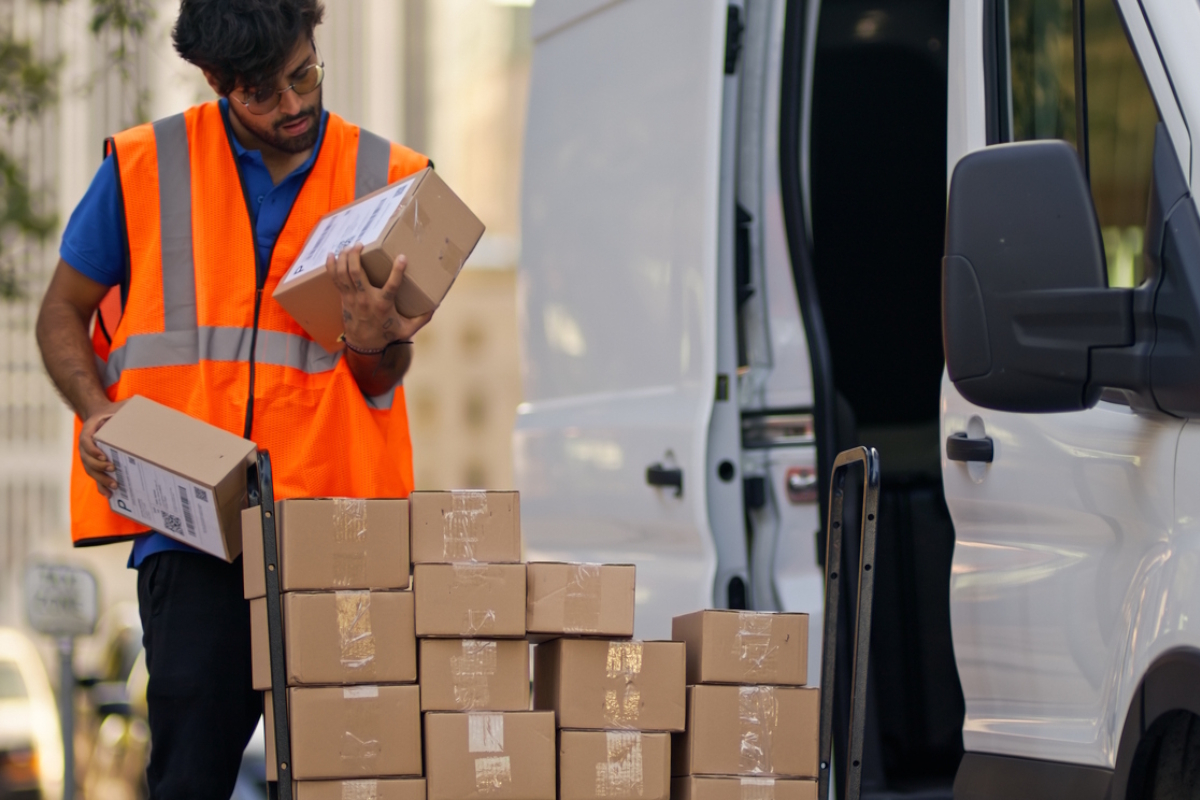The last-mile revolution needs the cloud

Dominik Birgelen at oneclick describes the benefits of empowering logistics teams with real-time data access
The last mile has become more important than ever. According to the Institute of Supply Chain Management (2025), it accounts for 53% of the total shipping cost and 41% of total supply chain costs, making it a critical factor in supply chain efficiency and performance.
As customer expectations evolve and delivery windows become increasingly shorter, logistics providers must move faster, smarter, and with greater flexibility. Yet, in many cases, those powering the final stretch of the supply chain – mobile delivery teams, drivers, and field staff – are still struggling with outdated tools and fragmented systems. The result? The last mile remains one of the most complex links in the supply chain, and mobile teams lack real-time access to unified operational data where and when it matters most.
Legacy systems still dominate the tech stack in logistics, siloing everything from fleet telematics and driver availability to customer updates and delivery SLAs, causing disruptions across the entire logistics operation. Without cloud-native orchestrations, field teams must operate in the dark, making real-time decisions based on stale data, patchy connectivity, or disconnected handheld systems.
The last-mile revolution cannot be driven solely by more apps or faster vans. It also requires edge devices, cloud data lakes, and APIs, all fully integrated into a single, intelligent platform that synchronises mobile teams with upstream systems.
Optimising rerouting and allocation
Cloud technology offers numerous advantages to the logistics sector. With the industry being responsible for monitoring, regulating, coordinating, and ensuring the timely delivery of goods to the end customers, the demand for transparency and reliability has never been higher.
Cloud platforms ensure that drivers, dispatchers, warehouse managers, and customer service teams all access the same data pool, allowing everyone – from field personnel to backend systems – to have access to the most accurate and up-to-date information. This enables better communication across departments, clearer accountability, and faster resolution of problems.
A centralised data system can also support continuous feedback on vehicles. Cloud connectivity enables real-time tracking, identifying vulnerabilities, and addressing them before they escalate into safety risks for operators (drivers, couriers, etc.).
Additionally, advanced cloud platforms can maximise performance by dynamically allocating and rerouting based on live traffic, demand, and vehicle telemetry.
Lastly, cloud systems can help improve safety and minimise downtime by enabling over-the-air software updates and patches, eliminating the need to take vehicles offline for manual maintenance.
Delivering on customer expectations
Customer expectations go far beyond fast delivery. With cloud architectures, logistics teams can meet these demands not only with speed but also through consistent data, transparency, and adaptability.
Today’s customers expect real-time visibility of shipping movements, the ability to locate their deliveries at any time, as well as the flexibility to reschedule or redirect deliveries as needed.
Providing more than just fast delivery is crucial to ensure supply chains achieve goals of efficiency and customer satisfaction. A report by Capgemini found that over 55% of customers would switch to a competitor if they offered a better last-mile experience, indicating that companies still tied to legacy systems risk falling behind customer-focused competitors.
Cloud-native integrations enable features such as status updates, live ETA data, automated alerts, and two-way communication with customers, along with rescheduling and modifications. These features are essential to meet expectations. Customers feel more in control when they are kept in the loop, and businesses benefit from fewer missed deliveries, reduced service calls and higher satisfaction scores.
Transitioning to cloud-native logistics solutions does come with challenges. Migrating legacy applications requires a significant investment of resources and careful consideration of security concerns and potential disruptions.
Gradual adoption and employee training, while maintaining legacy systems, can help with business continuity and foster a security-first culture. Despite the initial obstacles, addressing the limitations of legacy systems is vital to remaining competitive and meeting evolving customer expectations.
Zero trust in tandem with cloud
While the cloud offers unparalleled opportunities for flexibility and access, mobile logistics teams often operate across unsecured networks, unmanaged devices, and fluctuating connectivity, all while accessing sensitive operational and customer data. For instance, logging in from public networks or engaging with third-party APIs during operations introduces a wide attack surface for potential cyber-attacks.
According to the Information Commissioner’s Office, by the end of 2025, 45% of global businesses will have experienced a supply chain data breach, including incidents affecting the last mile, a threefold increase compared to previous years.
That’s where Zero Trust Architectures (ZTAs) come into play. ZTAs address vulnerabilities by operating on the principle of least privilege, essentially enforcing granular control. In the context of logistics, it ensures that every user, device, and API call is continuously verified, regardless of location or network.
By combining Zero Trust with a cloud-native infrastructure, businesses can protect the last mile while safeguarding sensitive customer and operational data. All without sacrificing usability and the agility of IT systems.
Intelligent last-mile ecosystems
The last-mile revolution is woven within intelligent orchestration, syncing operators, processes, and platforms through the cloud. Embracing this shift, and recognising that it goes beyond faster vehicles or delivery apps, is essential to building resilient supply chains and achieving long-term business goals.
It’s time for logistics to move beyond delays, guesswork, and data blind spots that still swamp legacy systems and hinder delivery team performance. The future of logistics is interconnected, secure – and powered by the cloud.
Dominik Birgelen is CEO of oneclick AG Group
Main image courtesy of iStockPhoto.com and halbergman

Business Reporter Team
You may also like
Most Viewed
Winston House, 3rd Floor, Units 306-309, 2-4 Dollis Park, London, N3 1HF
23-29 Hendon Lane, London, N3 1RT
020 8349 4363
© 2025, Lyonsdown Limited. Business Reporter® is a registered trademark of Lyonsdown Ltd. VAT registration number: 830519543





